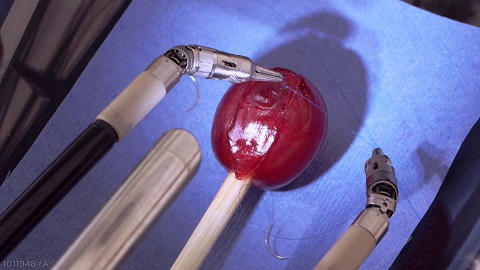 As medical procedures become more complex, new surgical methods are introduced to the operating room to eliminate human error and speed up patient recovery time. Approved by the FDA in 2000, the Da Vinci surgical robot is an innovative method of improving surgeries by minimizing the size of patient incisions. The Da Vinci has been implemented in thousands of facilities, conducting over 200,000 successful surgeries worldwide. The possibilities for the Da Vinci robot are still growing due to the wide range of medical applications the system is capable of improving.
As medical procedures become more complex, new surgical methods are introduced to the operating room to eliminate human error and speed up patient recovery time. Approved by the FDA in 2000, the Da Vinci surgical robot is an innovative method of improving surgeries by minimizing the size of patient incisions. The Da Vinci has been implemented in thousands of facilities, conducting over 200,000 successful surgeries worldwide. The possibilities for the Da Vinci robot are still growing due to the wide range of medical applications the system is capable of improving.
The Da Vinci is a human controlled, four-armed robot capable of stitching, cutting, sniping, and grabbing, to complete a variety of difficult surgical procedures. These small robotic arms allow for a small entry incision to be made on the patient, offering a quicker recovery time and less pain afterwards. The robot arms follow the surgeon’s movements so precisely, they are even able to stitch torn grape skin back together with zero human contact.
The machine is operated by two people; a doctor who controls the camera and a surgeon controls the robotic arms by joysticks and foot pedals. Da Vinci’s 3D camera allows the surgeon to view a high-definition 3D image of the inside of the body as he works from his seat. Safety features, such as tremor reduction, are installed into the system minimize human errors as they work, making the procedures much less risky than traditional ones. Originally, the Da Vinci was most commonly used for prostatectomies, but is being increasingly used for more complex procedures including cardiac valve repair and removing tumors from difficult areas such as lungs.
Eclipse Automation is always looking for the most advanced solutions in the medical industry, and offers extensive experience in surgical devices and tools, with detailed micro-component sort and assembly to ensure that your products are of the utmost in quality and safety.
Source: DailyMail
